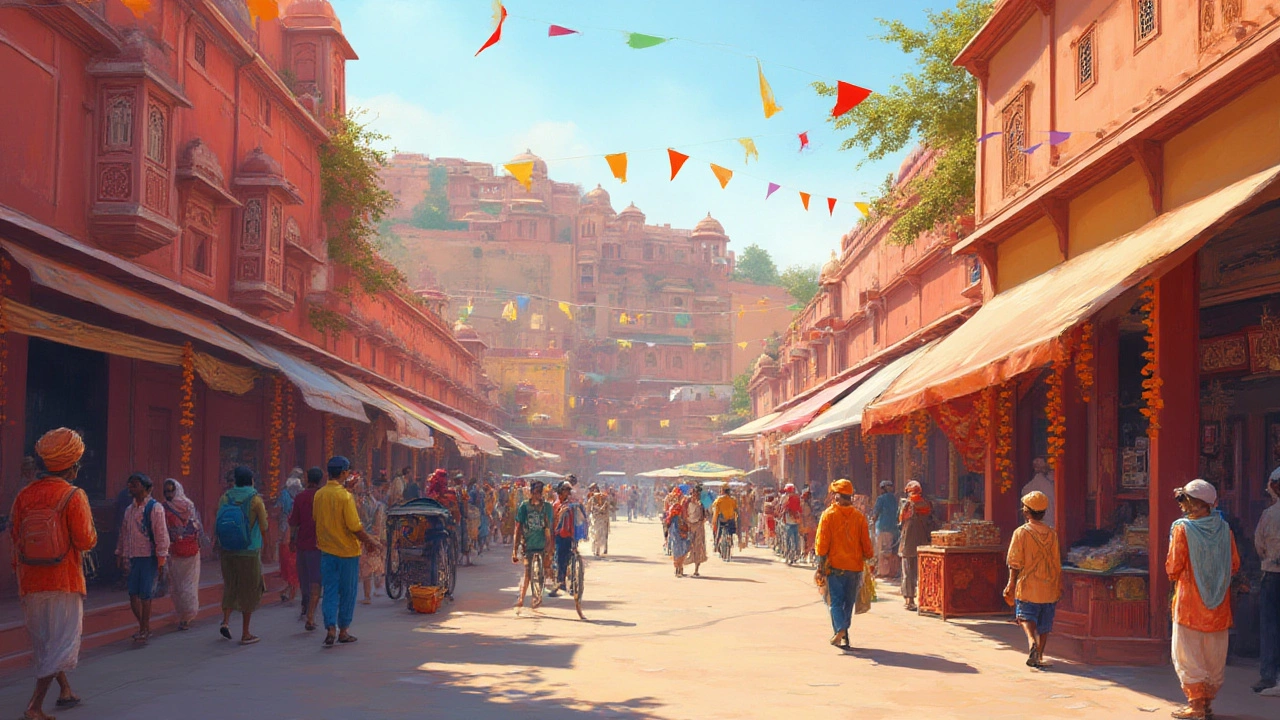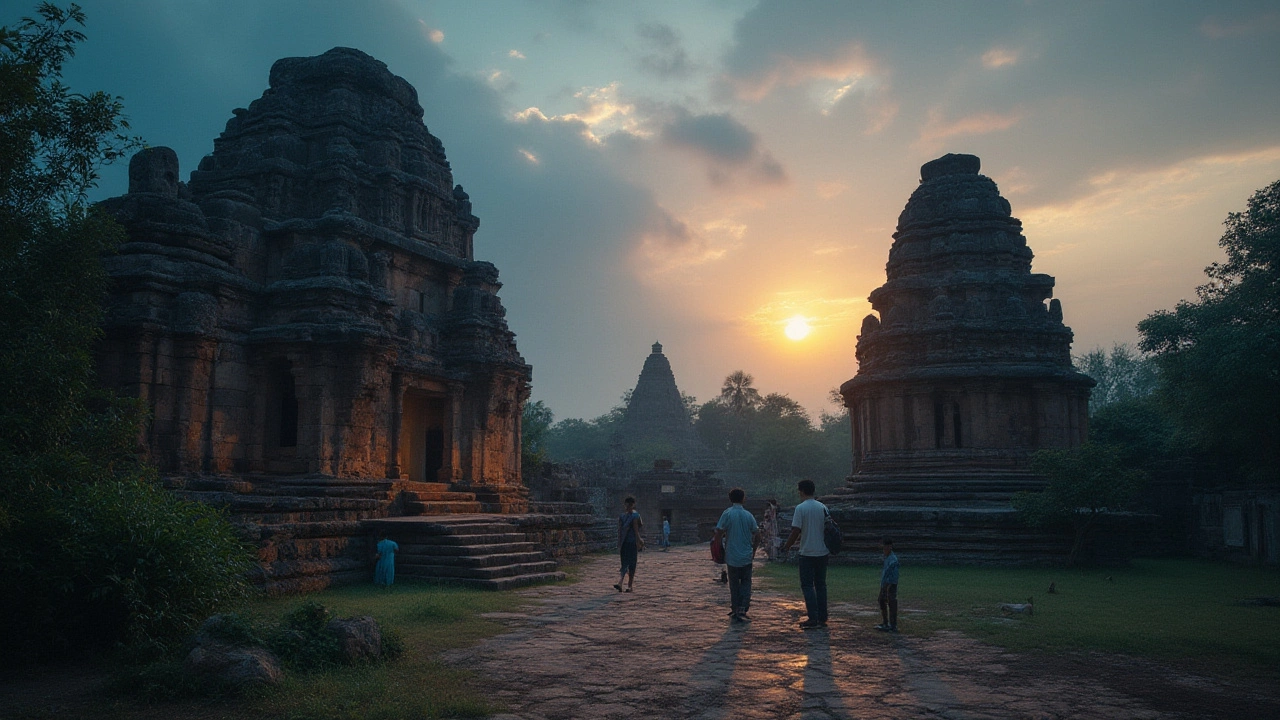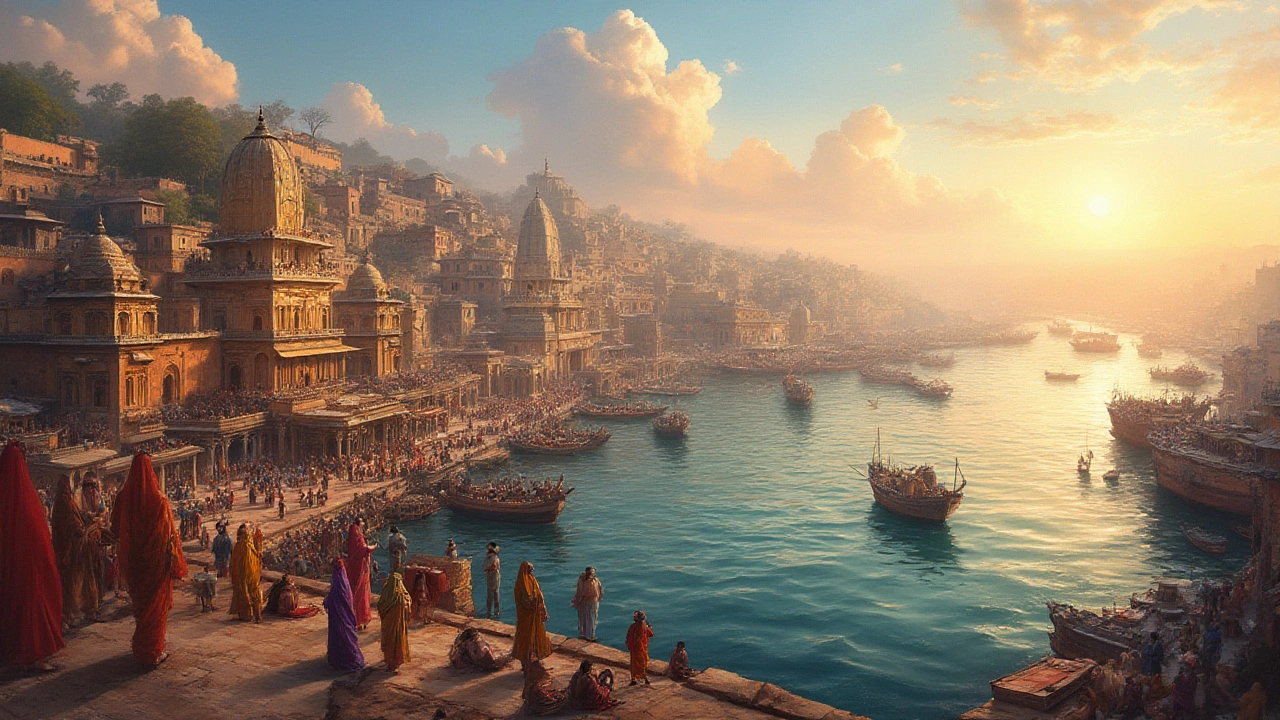The sheer scale of India's heritage can be overwhelming. This isn't just a country of ancient ruins and faded forts—some cities have earned global recognition as living, breathing heritage sites. Think of streets where ancient temples sit beside bustling markets, architecture with centuries of stories, and entire neighborhoods that have made UNESCO’s impressive list. Ask most people on the street which city is the official 'heritage site of India,' and you’ll get a dozen answers. But only a handful of cities wear the actual UNESCO badge—and each one has a personality that's impossible to copy.
India's UNESCO World Heritage Cities: What Makes the Cut?
Alright, let's set the record straight first—there isn’t one city that claims the title of "the" heritage site of India. Instead, India is home to several cities holding official UNESCO World Heritage City status. The giants in this league? Ahmedabad in Gujarat and Jaipur in Rajasthan. Both have snagged their spots for very different reasons, and both are absolute field days for anyone who loves culture, history, and food.
Ahmedabad, labeled a UNESCO World Heritage City in 2017, brims with antiquity. This city isn’t just ancient; it’s a canvas where Sultanate-era mosques, colorful stepwells, and Hindu and Jain temples crowd together, often on the same block. Wander through the labyrinthine pols (historic housing clusters) and you might stumble upon houses that have survived earthquakes, empire changes, and time itself. UNESCO loved how the city’s architecture and daily life reflect a kind of co-existence that just isn't easy to replicate. Locals still celebrate age-old traditions like kite festivals and night-time garba dances through those same narrow lanes their grandparents used.
Jaipur, awarded World Heritage status in 2019, stands out for its urban planning and architectural beauty. Known as the Pink City, Jaipur didn’t get its color by accident—the pink paint was part of a well-thought-out urban plan during colonial times to impress the Prince of Wales. Think about that next time you post your Hawa Mahal selfie on Instagram. Jaipur's grid-like layout was revolutionary for 18th-century India, inspired by ancient Vedic architecture. UNESCO highlighted how Jaipur’s palaces, observatories, and bazaars blend Rajput, Mughal, and European influences. It's not just tourists who love getting lost in the city’s gemstone markets and old bazaars, but locals too. Life in Jaipur revolves around history without getting stuck in it.
| UNESCO Heritage City | Inscribed Year | Main Reason for Inscription |
|---|---|---|
| Ahmedabad | 2017 | Continuity of traditional urban life, unique pol architecture |
| Jaipur | 2019 | Urban planning, architectural harmony, living traditions |
Outside these two, there are many UNESCO World Heritage sites spread across Indian cities—from Delhi’s Red Fort to Varanasi’s ghats—but only Ahmedabad and Jaipur stand as full cities on the list. That’s what makes them special. Gwalior, Lucknow, and Mumbai are often spoken of as heritage-rich, but they don’t have the official UNESCO World Heritage City status (yet).
This isn't to say other cities are short on heritage. Varanasi, the world’s oldest continually inhabited city, is in a league of its own, even without the UNESCO tag. Mysore, Hyderabad, Kolkata, and more all boast palaces, relics, and stories that pull crowds from every corner of the world. But in official terms? For now, Ahmedabad and Jaipur are the heavyweights when it comes to entire cities being recognized for their heritage value.

Exploring Heritage: What to See, Eat, and Experience in Ahmedabad and Jaipur
Knowing a city’s heritage is nice—experiencing it is a whole different game. Start with Ahmedabad. If you’re up for early starts, the heritage walks organized by the city itself are gold. These walks often begin at Swaminarayan Temple in Kalupur and snake through historic pols, wooden havelis (mansions), secret courtyards, and tucked-away bird feeders called chabutras. You spot intricately carved brackets on old buildings side-by-side with the din of modern life—kids playing cricket, the distant clang of a blacksmith, families cooking eight generations' worth of recipes. There’s something about the scent of cooking spices mixing with sandalwood incense wafting through centuries-old air that makes the past feel alive.
If you’re a numbers person, Ahmedabad has over 2,600 pols scattered through its old city, each with its own identity mark, rulebook, and social gatherings. There’s a kind of secret code to finding the best jalebi or dhokla stalls in these lanes—you’ll know you’re close when you see locals queuing at a nondescript window. Don’t leave without trying Gujarati thali: a bottomless plate of local vegetarian dishes, always served with a smile that could win awards.
Jaipur spoils you for choice too but adds royal flair. Stroll the pink-hued streets and you’ll run headlong into gems like the City Palace, Jantar Mantar (an 18th-century astronomical observatory), and the Hawa Mahal, a palace that looks like a beehive built for queens. Jaipur’s Amer Fort is every bit a fairytale castle, perched above town with sweeping views and mirrored mosaic halls. If you have kids, they’ll fight for window seats on the elephant ride up (just make sure to pick ethical options—some organizations focus on animal welfare).
Shopping here isn’t just about picking up souvenirs. Jaipur’s bustling Johari Bazaar is the spot for gem enthusiasts, while Tripolia Bazaar dishes up bangles in colors that would make a rainbow jealous. Food-wise, you’re not living the full Jaipur story until you dip crispy kachoris into spicy chutney or cool down with a glass of thick lassi somewhere near MI Road.
- Ahmedabad's Manek Chowk turns into an open-air food paradise at night. Try the chocolate sandwich and buttery pav bhaji, local favorites even though they sound odd together.
- Jaipur lights up with evening folk dance shows, puppet plays, and rooftop dining with palace views. If you go in winter, the city feels like a festival—every day.
- Ahmedabad is obsessed with kite flying in January (Uttarayan), a tradition so fierce the entire sky turns into a fluttering canvas of color, while Jaipur dishes out extra color with Holi, Diwali, and the famous Teej festival.
If you’re keen on numbers, here’s a fun stat: on International Museum Day in 2023, over 25,000 people visited the City Palace Museum in Jaipur in a single day. Tourist footfall across both cities sees spikes during holidays, but hotel prices are much friendlier if you visit during the shoulder seasons (March-April and September-October).

Tips for Heritage Hunters: Planning and Respecting the Old
This is the part I wish more people cared about—good heritage travel means seeing cool stuff and not trampling all over it. For Ahmedabad and Jaipur, walking tours (offered by local NGOs and tourism offices) are ideal. You’ll get stories, context, and a few hidden doors flung open, which you’d never have stumbled on by yourself. Always ask before taking photos inside pols or havelis—many are still private homes, and residents treasure their privacy.
Summer (April to June) is brutal—temperatures in Rajasthan often soar over 40°C, and humid evenings in Gujarat can sap your energy. Pack light cotton clothes, sun hats, and always carry a reusable water bottle. Most neighborhood stalls are cash-only, so keep some small notes handy, but many tourist shops and cafes now accept digital payments as well.
Respecting traditions goes beyond removing shoes at temple sites. In both cities, religious processions are common, sometimes blocking roads for hours. If your tuk-tuk gets caught, don’t grumble—snap some pics; you’re witnessing living heritage in real time. Try local transport: Ahmedabad’s BRTS buses and Jaipur’s electric rickshaws are cheap and surprisingly convenient. Drivers love sharing stories, and you might get tipped off to secret local food spots.
There’s also a modern flip side. Both cities balance preservation and progress—a challenge everywhere but especially intense when city centers are centuries-old. Locals work hard to keep their history alive, fighting off developers itching to raze charming but fragile structures. Sustainable tourism is huge: if you’re shopping for crafts, pick shops working with local cooperatives, not mass-produced knockoffs.
Want to time your trip just right? Kite Festival in Ahmedabad (every January) is wild. In Jaipur, the Teej festival (July/August) and Diwali are full-blown spectacles, with decorations, parades, and special prayers. Book hotels in advance during these festivals—the old city fills up fast.
For families: many heritage walks are now kid-friendly, with guides ready to handle curious, tireless kids like Finnian. Several museums run special workshops—think block printing, puppet making, and even kite crafting sessions. Bring snacks for little ones (and for yourself).
Both Ahmedabad and Jaipur are living reminders that heritage isn’t a dusty relic locked in a cabinet. It’s in the taste of the food, the sound of temple bells, and the swirl of saris in the marketplace. For every visitor who walks respectfully, listens long enough, and takes home more than just selfies, there’s a little more hope that these cities' stories will keep ringing out for another thousand years.
